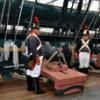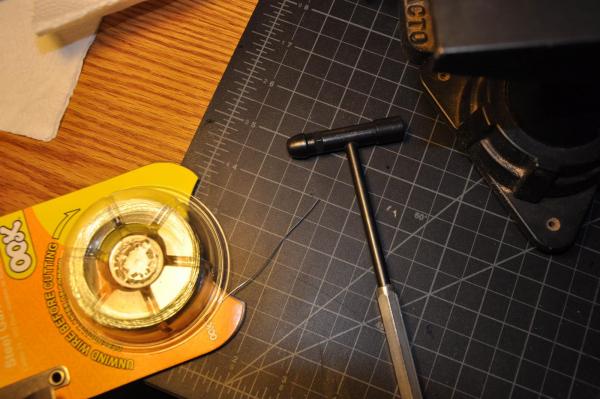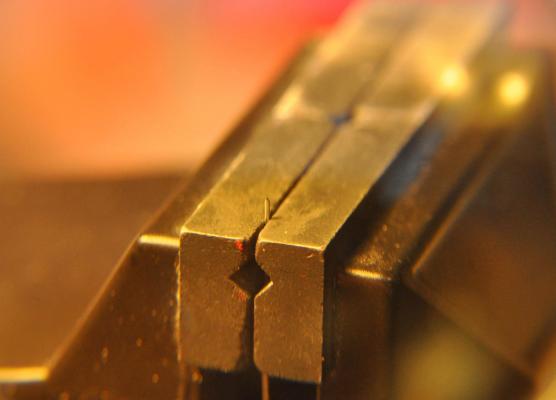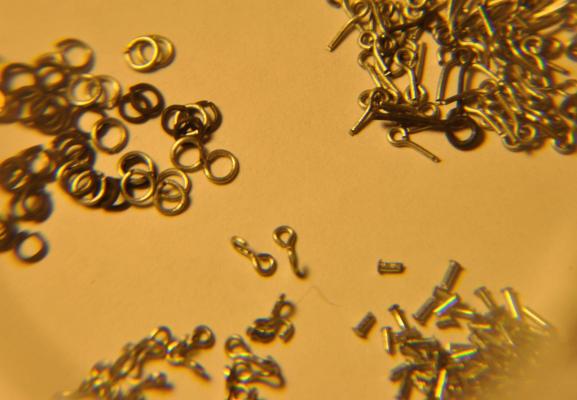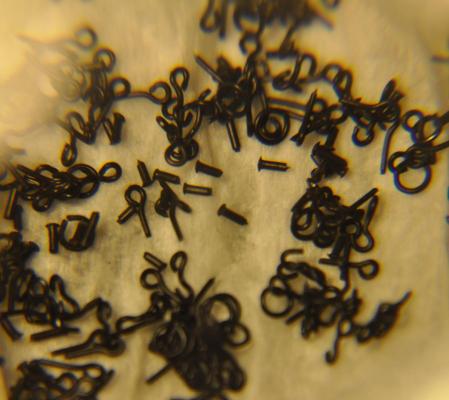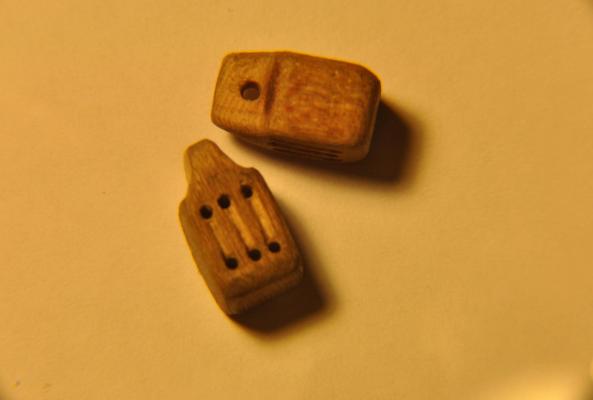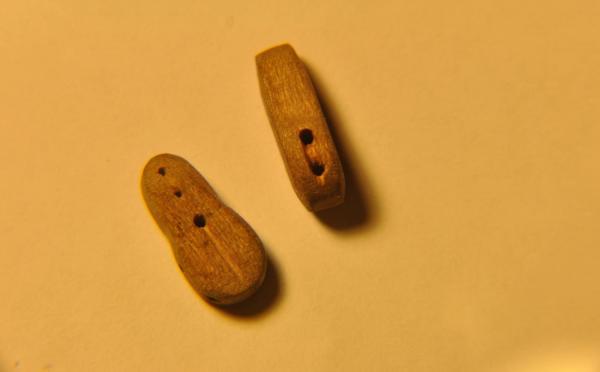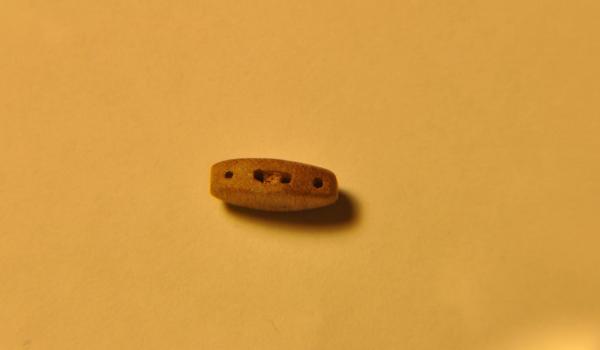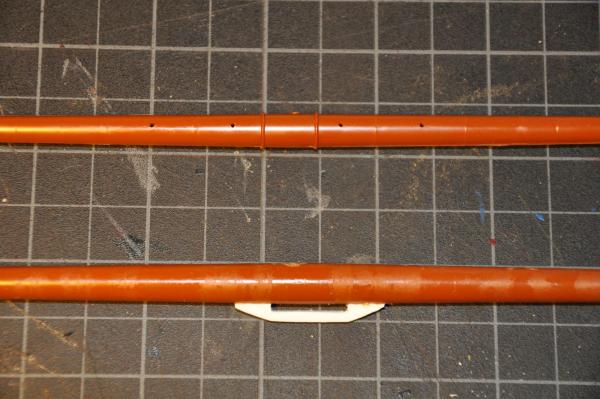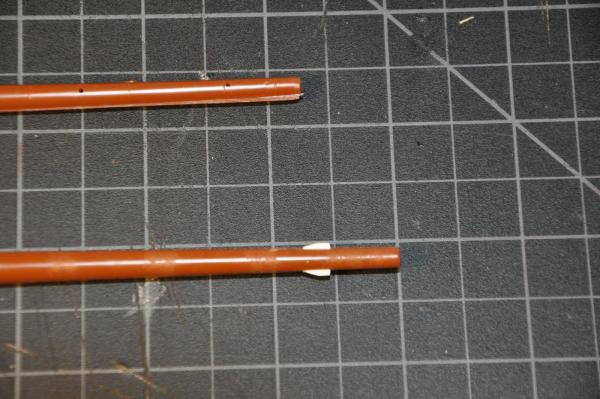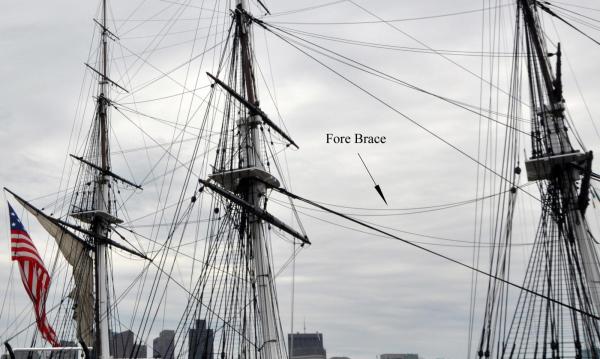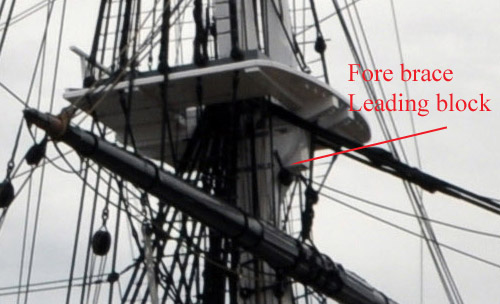-
Posts
1,935 -
Joined
-
Last visited
Content Type
Profiles
Forums
Gallery
Events
Everything posted by popeye2sea
-
Kilo66, that object is painted red because it is part of the modern damage control systems (fire suppression) on the ship. I believe that it is a riser for attaching a fire hose to and it comes up through the deck behind the bilge pump. There is probably a fire hose mounted on the beam right next to it. Also in a bracket next to it would be a spanner wrench (painted red) used to attach the hose to the riser. I'll have to check my pictures to confirm. Not sure which item you have in your picture. If you post your picture (perhaps in another thread, so we do not continue to hijack Evans) I will be able to help you more.
- 446 replies
-
- Revell
- Constitution
-
(and 1 more)
Tagged with:
-
Worming and parceling are a lot of extra work, and some say not worth the trouble. To my mind parceling is overkill as it probably adds too much thickness to the line, especially given that whatever material you use to parcel with is going to be completely out of scale. However, worming gives a nice smooth appearance to the finished service. If the line is served without worming you end up still seeing the lay of the rope. On the other hand, I have read that not all servicing was done with worming. Some sailors believed that the worming trapped moisture against the line and promoted rot. It really is up to you, and whatever you do will just enhance the already beautiful work of art you have done. Regards,
- 2,250 replies
-
- model shipways
- Charles W Morgan
-
(and 1 more)
Tagged with:
-
Says a lot for your solid construction. If I did that with mine you would hear the loose cannon rolling across the gun deck. Seems the crew did not get the word early enough to lash the great guns properly when the ship pitched deep. I even managed to recreate Constitutions damage from the collision of 1803 with President. Although truth be told my models sudden pitching forward was not planned or controlled like yours. Regards,
- 732 replies
-
- constitution
- model shipways
-
(and 1 more)
Tagged with:
-
Been good John. No tours on the Conny for a while. Getting more work done on the Le Soleil Royale, but a little thing like my job keeps me busy. Your Morgan is looking ship shape. Regards,
- 2,250 replies
-
- model shipways
- Charles W Morgan
-
(and 1 more)
Tagged with:
-
Alexeys' serving machine makes the job easy. Did you worm and serve with the lay, then turn and serve the other way? Regards,
- 2,250 replies
-
- model shipways
- Charles W Morgan
-
(and 1 more)
Tagged with:
-
Stand by for heavy rolls as the ship is coming about!
- 732 replies
-
- constitution
- model shipways
-
(and 1 more)
Tagged with:
-
Beautiful work. There is something though, that I have seen with each model of Vasa. Why does the main top cant forward so much? I would think that it would be set so that it ended up level fore and aft. Every model I have seen has the top down by the bow, so to speak. Seems like it would make for some hazardous conditions aloft. Regards,
-
Jay, Sorry to be the bearer of bad news, but I have a tool very similar to this that I purchased from Micro Mark many years ago. It is part of a set called "5 piece Rigging Tool Set" and is still available in their catalog (part # 60378). They have both push and pull type tools and even on that has an offset reach. Regards,
-
It's been so long since I posted on my build log that it drifted down to page three under my content. Still working on the cannons. I have to say I have hated making all the tiny carriage bolts for all the upper deck guns. I made the decision to install eight carriage bolts on each gun carriage. So for the 28 visible guns that I am rigging that amounts to 224 carriage bolts. And I made them all the old fashioned way; ball peen hammer and an anvil. These things are tiny 2/32nds to 3/32nds inch long made from 24 guage steel wire. I could only stand to make about 20 at a sitting. Here is the pile of iron fittings for the cannons. This includes hooks, rings for ringbolts, eyebolts, and carriage bolts. And here is what they look like after blackening. In between doing all the iron work I started fashioning some of the specialty blocks for the rigging. Here is a rams head block. It will be used for the main and fore halyards. The tye goes through the hole in the narrow portion at the top of the block while the halyard reeves through the triple sheaves with the knight on deck. Next up is the topsail sheet and lift block. These look like fiddle blocks but the upper sheave runs perpendicular to the lower and the strop goes through the center of the block between the two sheaves. The lower (larger) sheave is for the topsail sheet and the upper sheave is for the main lifts. To go along with the lower lift blocks there are upper lift blocks. These have an elongated shape with additional holes on either side of the sheave. The standing part of the main lift is spliced in through one hole and the other is for the pendant that connects this block to an eyebolt in the mast cap. Also to be done will be euphroes, clew garnet blocks, and spritsail sheet blocks All of the specialty blocks are being made out of cherry strip stock (because that is what I could find at my local woodworkers shop). In addition to the blocks I started on the main yard. It is molded in two halves with raised rings that I think are supposed to tell you where to put all the furnishings. I sanded all that off. After doing a test run of rigging the tye and halyard to see how long the lines need to be in order to hoist the yard from the deck I realized that there is just not enough weight to the yard to put enough tension on the rigging. It ended up looking too slack. I knew that I was going to stiffen the yard with something inside of it so I went with solid brass rod. I also added cleats at the center and at the yard arms. In addition I filled all of the holes for the foot ropes and stuns'l booms. Astonishingly, I found that foot ropes were not commonly in use by the French on their lower yards during this time period. They came into general use for the topsails first. I started making boom irons to add later. I'll show them in a later post. Here is a comparison with the as yet untouched fore yard. That's all for now.
- 196 replies
-
- plastic
- soleil royal
-
(and 2 more)
Tagged with:
-
Jay, The lead block for the fore topsail braces runs essentially the same as the fore brace. In the photo that I have the lead block is either attached to the trestle trees of the topmast or the collar of the stay close under the cross tree, I can't tell which in the photo. I have lots of photos of the ship. There is absolutely no need to be out in this weather taking more. I just blow up sections of the ones I have. Regards,
- 732 replies
-
- constitution
- model shipways
-
(and 1 more)
Tagged with:
-
Jay, They are a day late and a dollar short, I know, but here are the pictures of the fore brace that I promised you.
- 732 replies
-
- constitution
- model shipways
-
(and 1 more)
Tagged with:
-
Thanks Mark. Some good ideas to try.
-
Hi folks, Does anyone have a good way to make small thimbles to be inserted in the stropped eyes of blocks in order to take a hook?
-
Your builds rigging is coming along nicely. I'm glad I could help
- 732 replies
-
- constitution
- model shipways
-
(and 1 more)
Tagged with:
-
I think that what you propose would not be far wrong. I have a picture of the ship that looks like the leading block is attached to the bibbs under the top. The brace pendant would be a heavy line (about half the size of the shrouds and the brace itself would be 1/2 to 2/3 of that. I will try try and attach the picture later. I am having some trouble with my photo program at the moment (need to resize the image to be able to upload). Oh, I forget to mention that the standing part of the brace starts at or near the collar of the stay (it's hard to tell in the pics that I looked at).
- 732 replies
-
- constitution
- model shipways
-
(and 1 more)
Tagged with:
-
In my opinion, it is a mistake to not include the lifts. They are a major player in the control of the yard. You would not want to have uncontrolled up and down movement of the yard arms putting strain on the sails and gear.
- 732 replies
-
- constitution
- model shipways
-
(and 1 more)
Tagged with:
-
Actually, during this period, the concept of the use of repeating ships was rare. Repeating ships being ships that repeat or answer the signal so that other ships in the line get the signal. Usually the only ship that made signals, and therefore had a full suite of flags, was the flagship. Also the signals used and the flags to represent them were promulgated by the Fleet admiral in his standing orders to the fleet prior to sailing. This was true until very late in the 1700's. And yes, it is correct that the Standard was often used as a signal flag.
-
Joel, the standard described in your references may not refer to the Royal Standard (of the sovereign). It could refer to the standard of a particular Flag officer.
-
If you thought that stepping the masts was tough, you should read the description of swaying the tops up and setting them into place. There is a good description of the same and a diagram of setting up a mast in Steels' Art of Rigging, 1925 Most of the heavy lifting of the cross trees, tops, shrouds, stays to be got over the mast heads were lifted by means of girtline blocks lashed to the mast heads. Even the riggers who went aloft to accomplish all this were hoisted aloft by the girtlines.
-
Would it be difficult to reeve the crowsfeet through the euphroe and the top with the euphroe up close to the top and then haul out to the stay using the tackle, adjusting tension on individual legs as you go?
-
The Naval Apprentice's Kedge Anchor. Young Sailor's assistant.(1st edition 1841) by William Brady. FYI - The Young Sea Officers Sheet Anchor by Darcy Lever, a republishing of the 1819 2nd edition, covers more or less the same information and is available from amazon for about $14.00.
- 446 replies
-
- Revell
- Constitution
-
(and 1 more)
Tagged with:
About us
Modelshipworld - Advancing Ship Modeling through Research
SSL Secured
Your security is important for us so this Website is SSL-Secured
NRG Mailing Address
Nautical Research Guild
237 South Lincoln Street
Westmont IL, 60559-1917
Model Ship World ® and the MSW logo are Registered Trademarks, and belong to the Nautical Research Guild (United States Patent and Trademark Office: No. 6,929,264 & No. 6,929,274, registered Dec. 20, 2022)
Helpful Links
About the NRG
If you enjoy building ship models that are historically accurate as well as beautiful, then The Nautical Research Guild (NRG) is just right for you.
The Guild is a non-profit educational organization whose mission is to “Advance Ship Modeling Through Research”. We provide support to our members in their efforts to raise the quality of their model ships.
The Nautical Research Guild has published our world-renowned quarterly magazine, The Nautical Research Journal, since 1955. The pages of the Journal are full of articles by accomplished ship modelers who show you how they create those exquisite details on their models, and by maritime historians who show you the correct details to build. The Journal is available in both print and digital editions. Go to the NRG web site (www.thenrg.org) to download a complimentary digital copy of the Journal. The NRG also publishes plan sets, books and compilations of back issues of the Journal and the former Ships in Scale and Model Ship Builder magazines.


